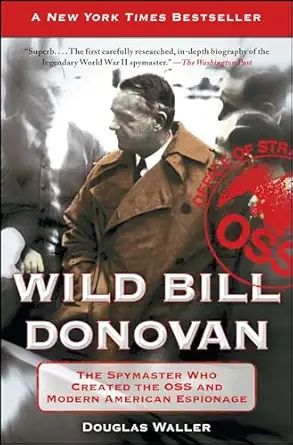The OSS—the WWII precursor to the CIA and modern U.S. Special Operations—produced field manuals for sabotage, morale operations, and irregular warfare. These documents show how the U.S. organized clandestine activities in occupied Europe and Asia, and they illuminate the origins of today’s irregular warfare concepts. We present verified, declassified copies for historical study and academic context.
De-Classified OSS Manuals
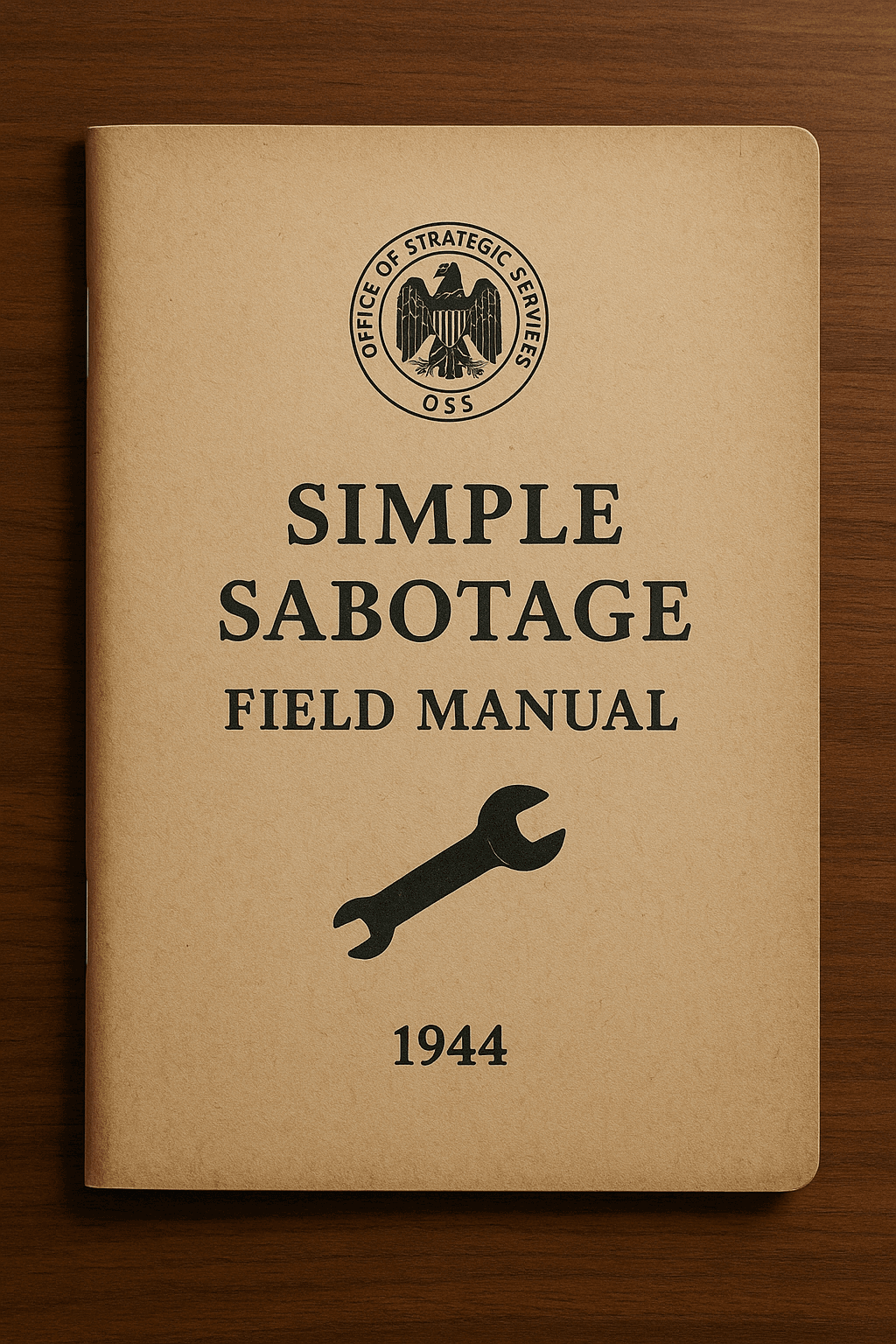
Simple Sabotage Field Manual (1944)
This manual, published by the OSS during World War II, outlines practical methods for ordinary citizens to disrupt enemy operations using simple, low-risk acts. It emphasizes small-scale actions, such as wasting time, spreading confusion, and minor physical sabotage, that could cumulatively degrade enemy efficiency. Written for distribution in occupied territories, it demonstrates how even untrained individuals could contribute to resistance efforts. Today, it is studied as both a historical artifact and a primer on low-end disruptive tactics.
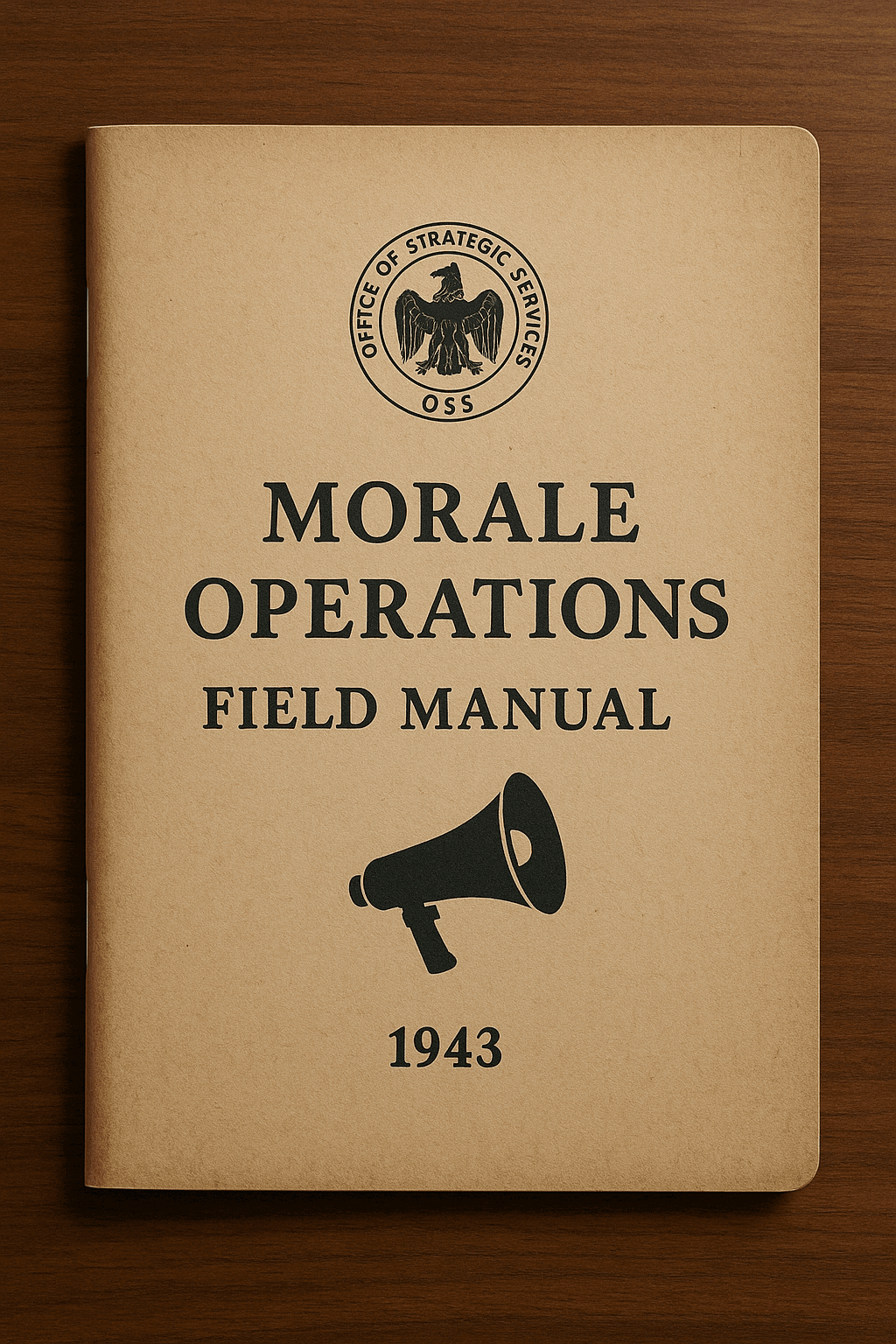
Morale Operations Field Manual
The Morale Operations manual guided OSS officers in psychological and propaganda campaigns designed to weaken enemy confidence. It provides detailed techniques for rumor-spreading, black propaganda, and other covert methods of undermining morale behind enemy lines. Unlike physical sabotage, its focus was on psychological impact, targeting perceptions, loyalties, and fears. It remains a foundational reference in the study of psychological operations and information warfare.
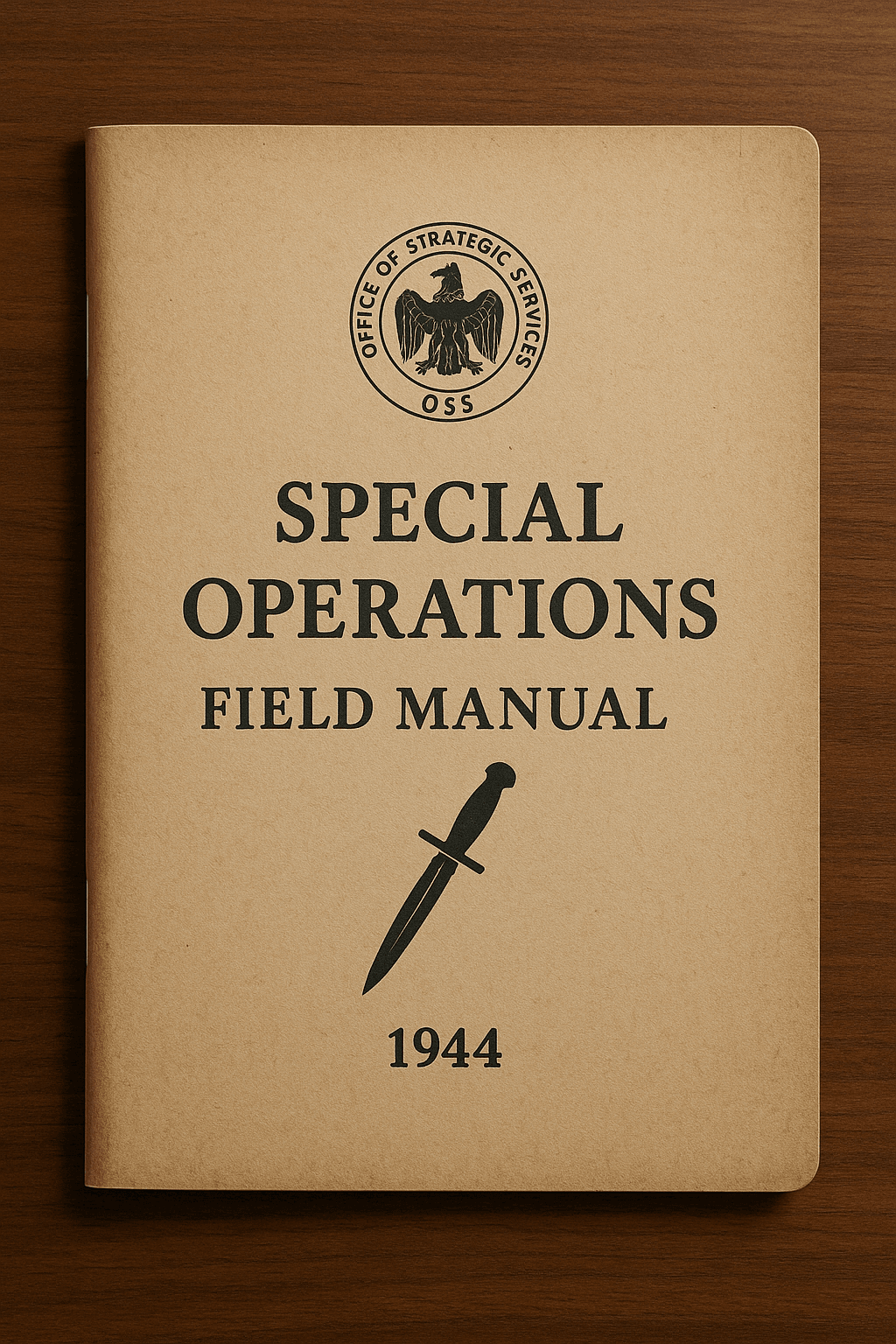
Special Operations Field Manual
This OSS manual served as a comprehensive guide for training and conducting irregular warfare operations during World War II. It covers planning, organization, guerrilla tactics, demolitions, and coordination with resistance movements. The field manual reflects the OSS’s role as the forerunner of modern U.S. special operations forces, blending doctrine with practical fieldcraft. Today, it offers valuable insight into the evolution of unconventional warfare doctrine.
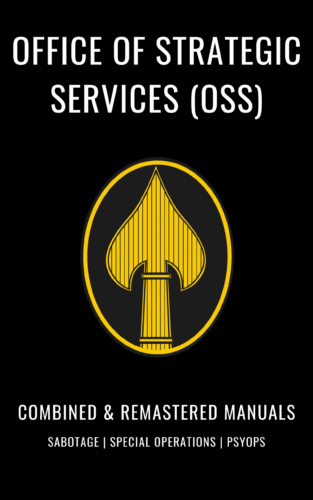
Office of Strategic Services: Combined and Remastered Manuals
This volume unites all eight original Office of Strategic Services manuals—faithfully reproduced and newly formatted for clarity and continuity. Each manual has been meticulously typeset and standardized to preserve historical integrity while enhancing usability for research, study, and instruction. From sabotage and resistance operations to psychological warfare and clandestine communications, this complete collection captures the doctrinal foundations of America’s first modern intelligence and special operations service.
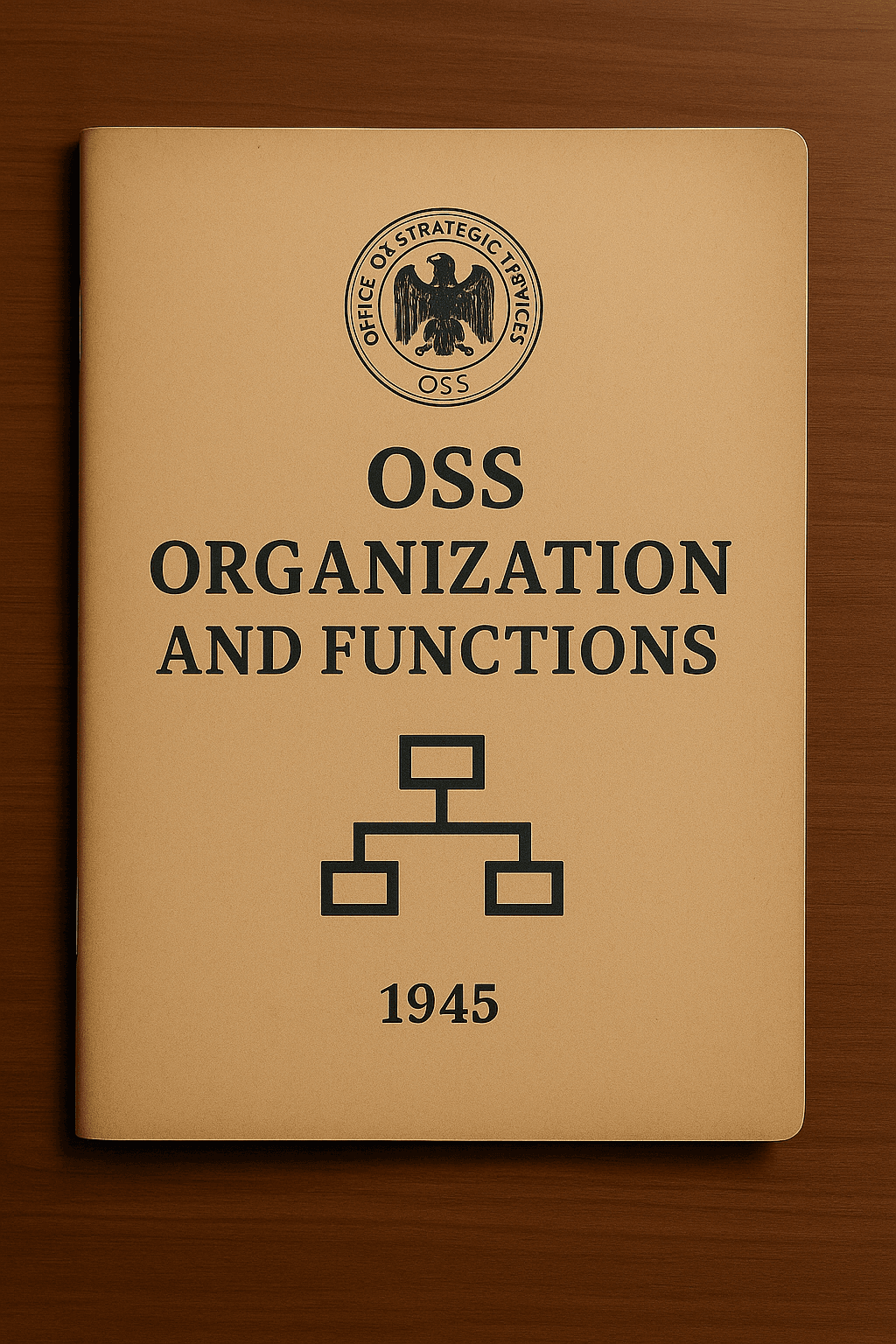
OSS Organization and Functions
This manual provides an overview of the Office of Strategic Services’ internal structure, outlining the roles, responsibilities, and coordination of its various branches during World War II. It details how intelligence, research, and operations were organized to support the Allied war effort through centralized planning and field execution. The text captures the OSS’s evolution into a unified wartime intelligence organization, precursor to the modern CIA, and remains a key reference for understanding the origins of U.S. covert and special operations.
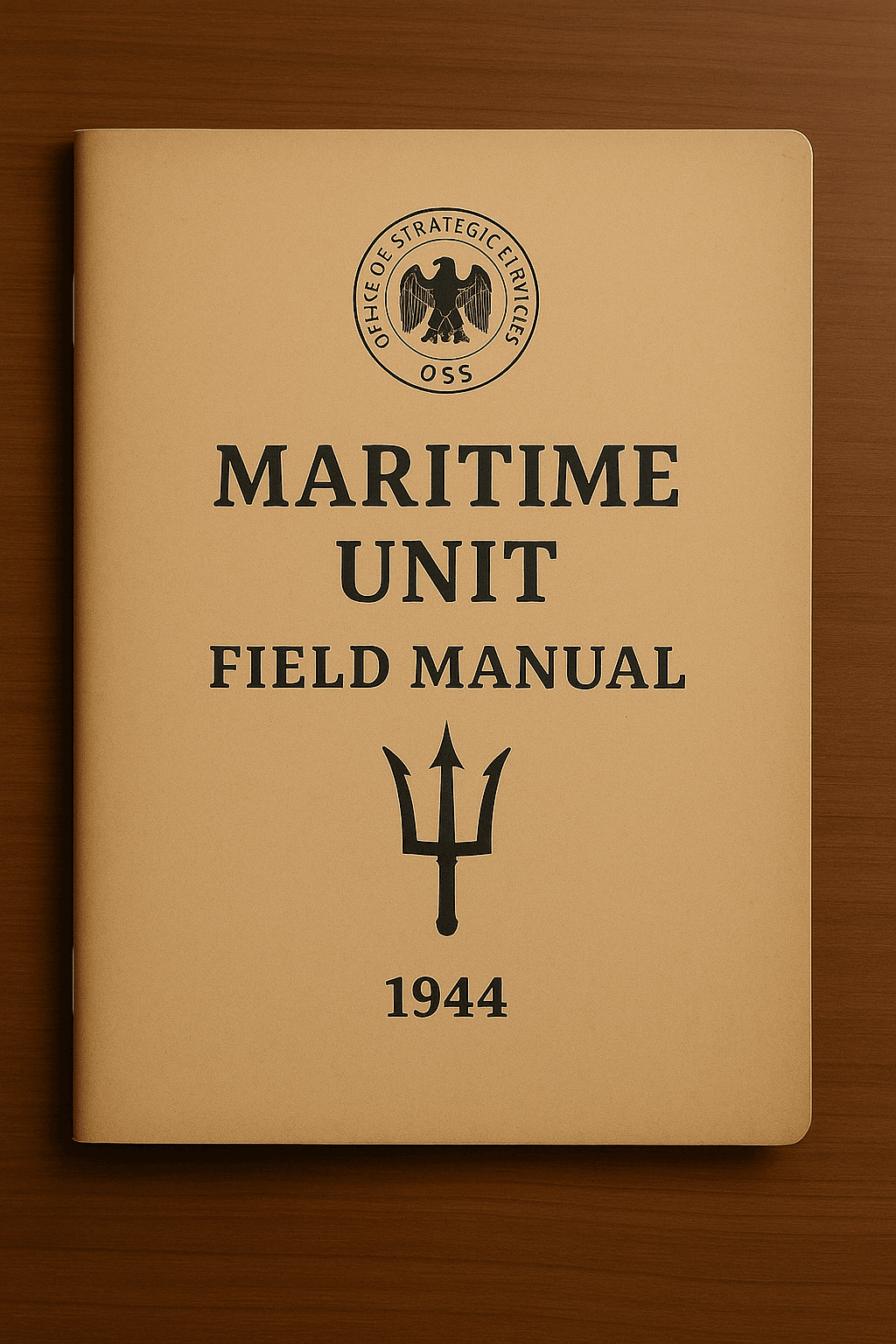
Maritime Unit Field Manual
This manual documents the doctrine and methods of the OSS Maritime Unit, the forerunner of today’s naval special operations. It covers coastal infiltration, swimmer delivery systems, demolition techniques, and specialized maritime sabotage operations. Designed for operatives working behind enemy lines, it emphasizes stealth, adaptability, and innovative use of equipment in maritime environments. The manual reflects the OSS’s pioneering role in combining irregular warfare with naval tactics to enable unconventional operations from the sea.
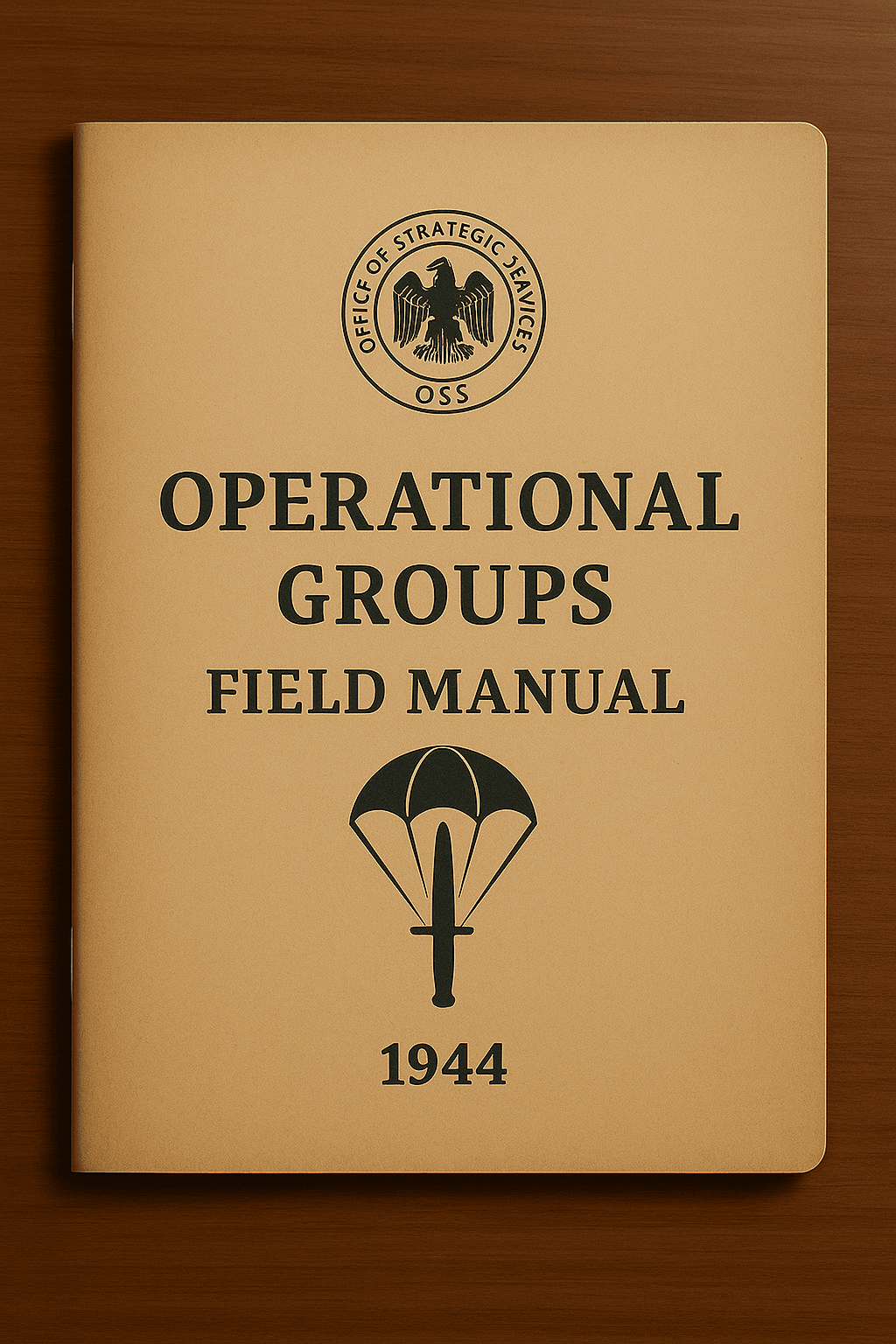
Operational Groups Field Manual
This field manual outlines the organization, training, and mission of the OSS Operational Groups—elite, uniformed units conducting guerrilla warfare in occupied Europe. It provides guidance on small-unit tactics, coordination with resistance forces, demolitions, and intelligence integration. The document captures the OSS’s shift from clandestine support to direct action, illustrating how Operational Groups became precursors to modern U.S. Army Special Forces and established many of the principles of unconventional warfare still studied today .

OSS Secret Intelligence Manual
The Secret Intelligence Field Manual is a procedural handbook created to guide clandestine intelligence work during World War II. It lays out the organizational principles, tradecraft, and security practices agents and operatives needed to gather, evaluate, and transmit critical information from hostile or neutral theaters. The manual emphasizes operational discipline: careful cover work, compartmentation, secure communications, and rigorous source evaluation so that small, well-placed actions produce disproportionate strategic effect.
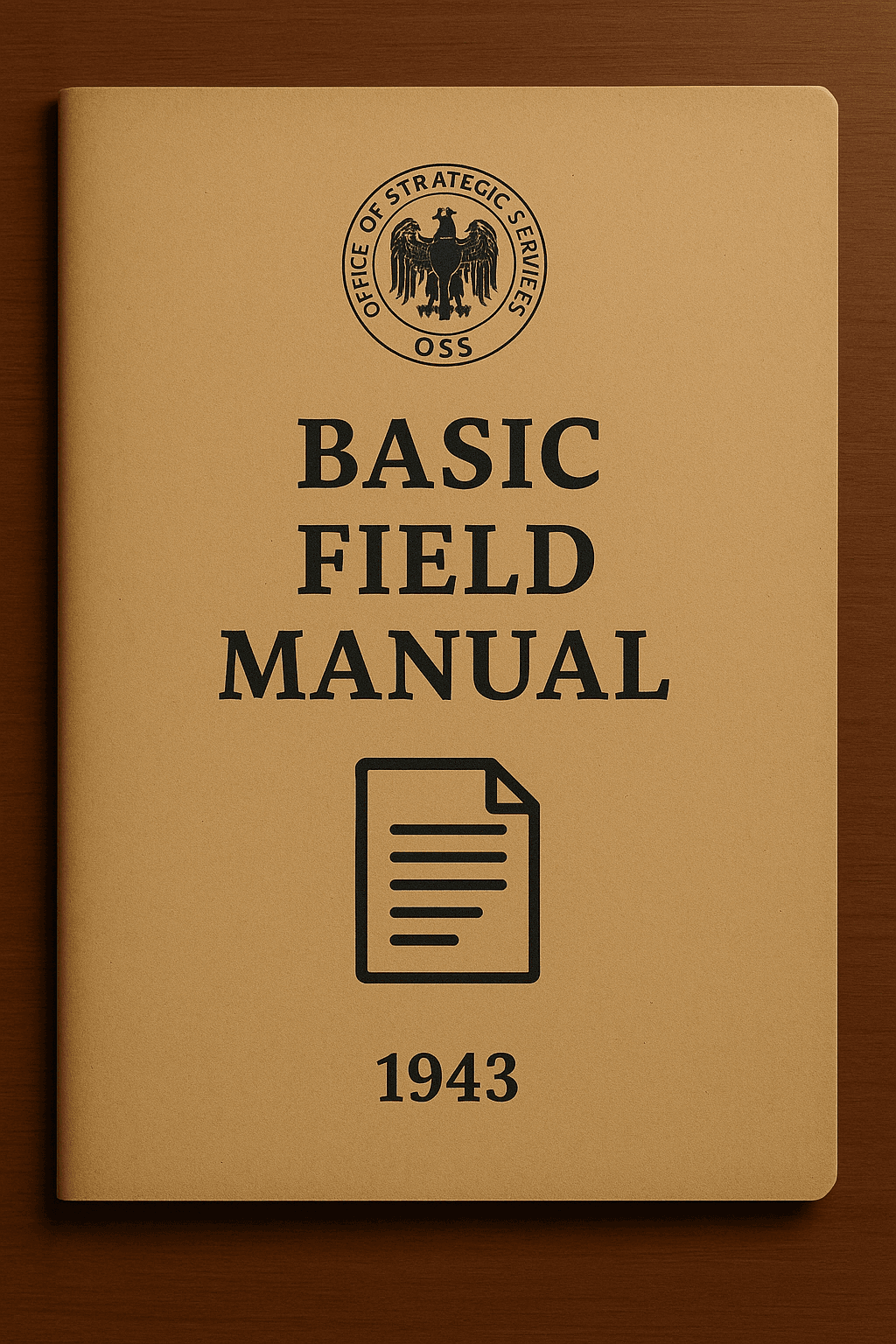
OSS Provisional Basic Field Manual
The Provisional Basic Field Manual is a straightforward field primer designed for OSS personnel preparing for overseas operations. It describes the essential duties, reporting standards, and practical preparations operatives required to function effectively in the field, including training scopes, arrival and departure procedures, and the handling of agents and records under high risk. It stresses clarity, speed of reporting, and the minimal paperwork and rigid security that preserved networks and safeguarded lives.
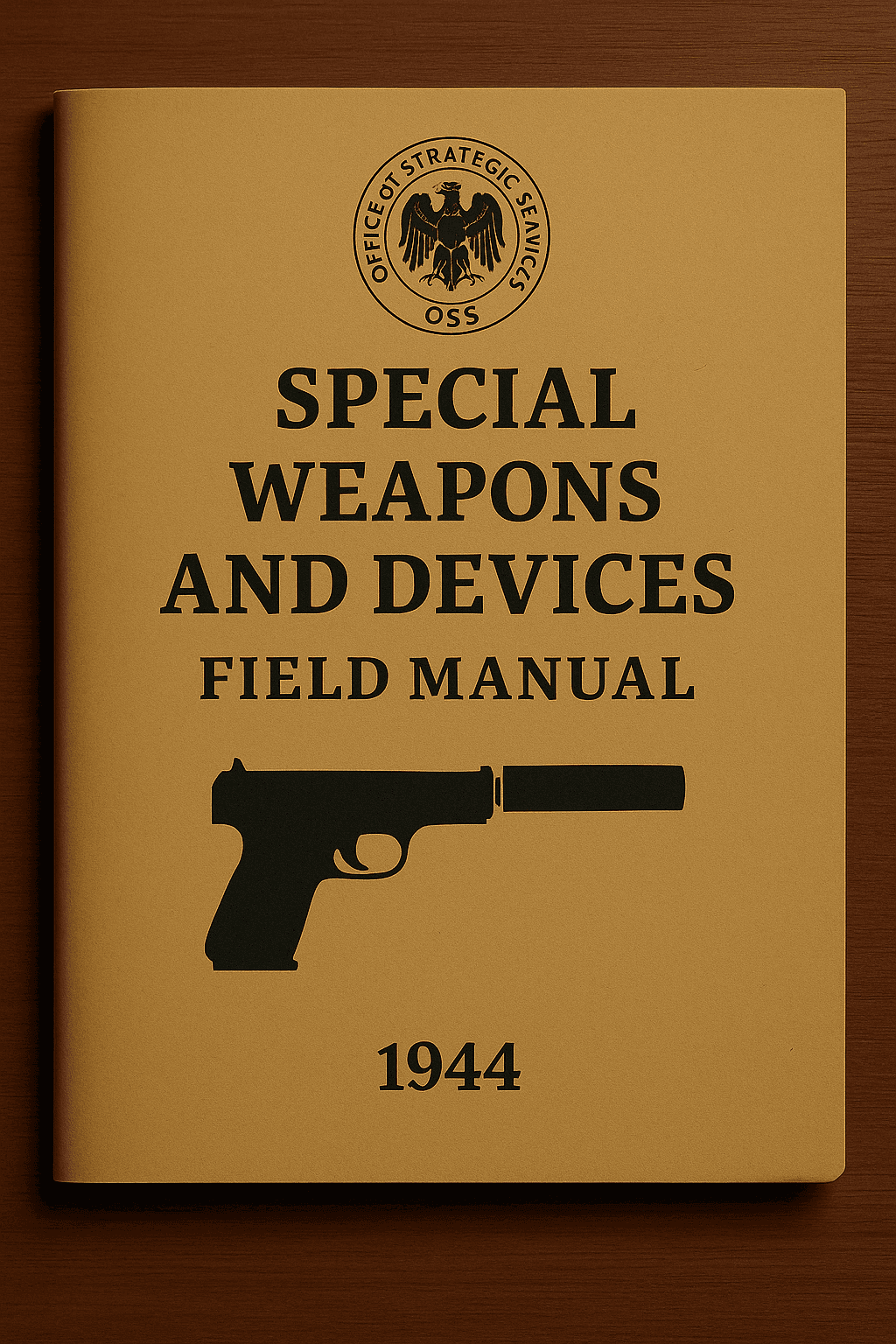
OSS Special Weapons and Devices
This illustrated manual, produced by the OSS Research and Development Branch catalogues the specialized weapons and devices developed for sabotage, covert action, and unconventional warfare. It details the design, construction, and employment of clandestine tools—including explosives, incendiaries, disguised firearms, and mechanical sabotage equipment—intended for field agents and resistance networks. The text reveals the ingenuity and improvisation that defined the OSS’s technical innovation. Available to access at the link until a pdf resource is found.

The Assessment of Men
Assessment of Men is a landmark 1948 book detailing the U.S. Office of Strategic Services’ (OSS) groundbreaking World War II psychological program for selecting spies and agents. Facing a need for personnel who could thrive under extreme stress, the OSS developed innovative, multi-day, scenario-based assessments to evaluate candidates’ adaptability, resilience, and problem-solving skills, methods that still influence modern intelligence and corporate talent selection.

War Report of the OSS
VOL 1
Volume I of War Report of the OSS documents the creation and wartime operations of the Office of Strategic Services—the United States’ first coordinated intelligence organization. Compiled by Kermit Roosevelt’s History Project, it traces the OSS’s origins, missions, structure, and lasting global legacy in shaping modern American espionage, covert action, and psychological-warfare doctrine worldwide.

THE OVERSEAS TARGETS
War Report of the OSS VOL 2
Volume II of War Report of the OSS chronicles the overseas operations of the Office of Strategic Services across Europe, North Africa, and Asia. It details field missions, intelligence networks, sabotage, and guerrilla coordination from London to Burma, vividly illustrating how OSS shaped Allied strategy, global resistance movements, and the enduring institutional foundations of postwar intelligence.
Additional Historical Accounts of the OSS
The Office of Strategic Services (OSS) was America’s first centralized intelligence agency, responsible for shaping modern espionage, sabotage, and irregular warfare. The following books explore its origins, missions, and legacy through the stories of those who built and operated it. From covert actions in occupied Europe and China to the creation of new weapons and psychological operations, each title provides a detailed look at how the OSS established the foundations of today’s intelligence and special operations capabilities.
Non-Profits Honoring the Legacy of the OSS
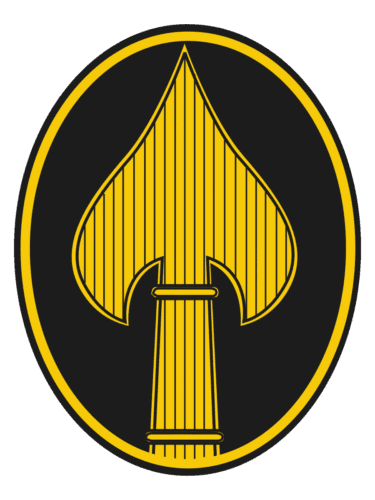
The OSS Society
The OSS Society honors the historic accomplishments of the Office of Strategic Services during World War II—the first U.S. agency to build a centralized system of strategic intelligence and precursor to today’s intelligence and special operations communities. It educates the American public on the enduring importance of intelligence and clandestine operations in preserving freedom and supports memorialization, scholarship and the creation of the National Museum of Intelligence and Special Operations.
More resources and historical materials are available on their official site here.
The manuals contained on this page are presented strictly as historical documents. They were created by the Office of Strategic Services (OSS) during World War II and are today part of the public domain, available through the CIA FOIA reading room and other archival sources. Their inclusion here is for educational and research purposes only, to highlight the evolution of irregular warfare thought. They are not intended as instructional guides for operational use. Readers should understand them in their proper historical and academic context. Though some classification markings may still be visible, all documents have been cleared for unlimited public release.

